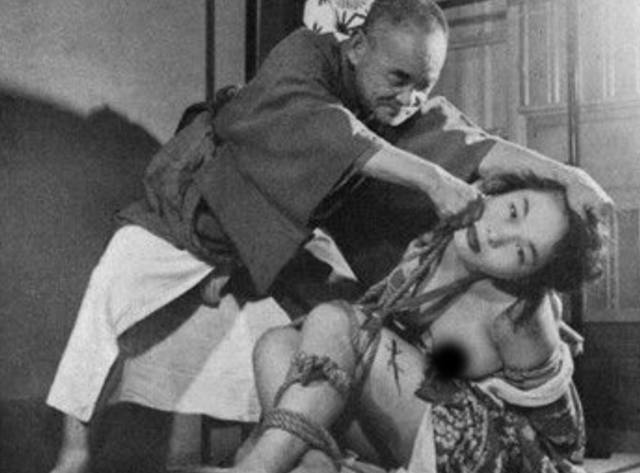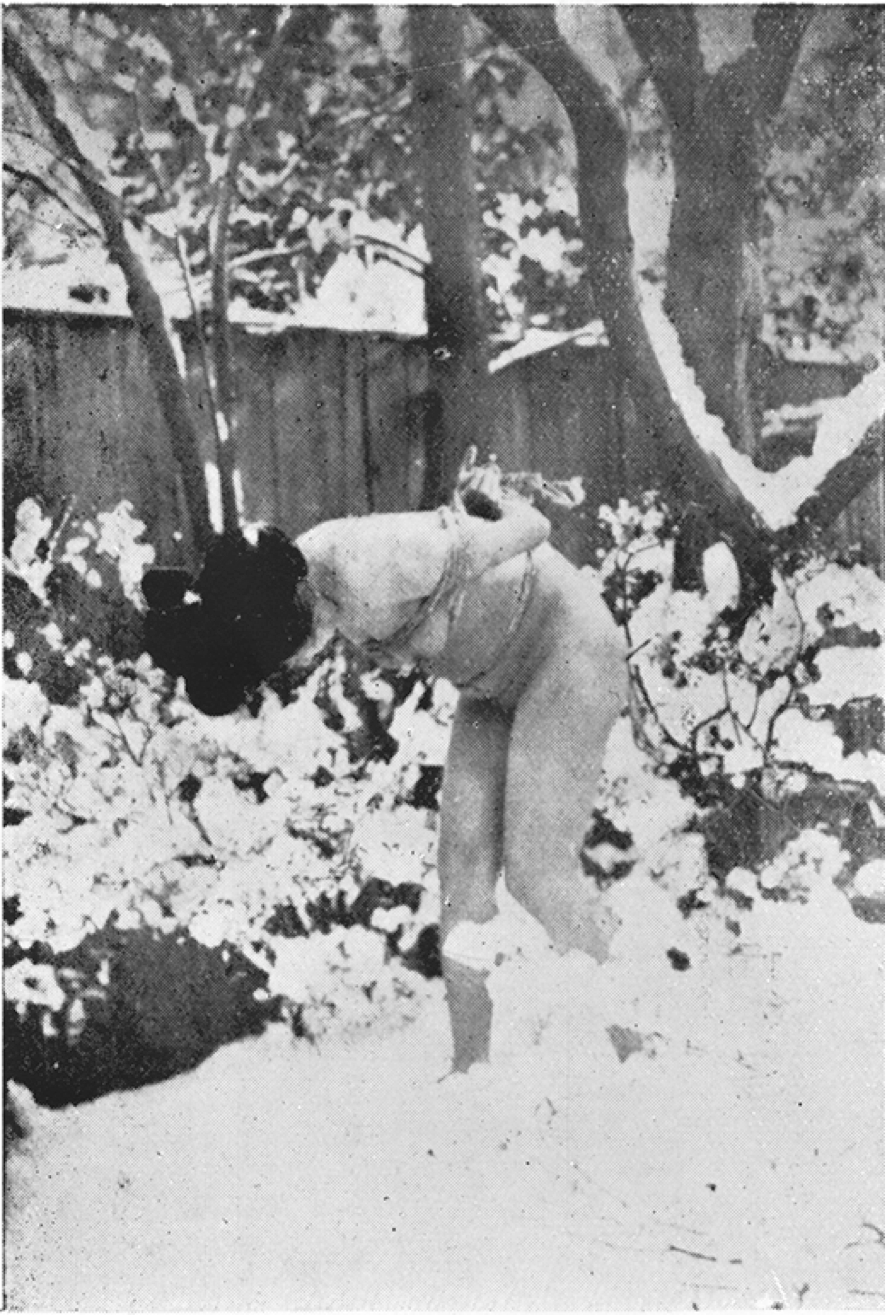There is probably no greater debate in rope circles today then the question of whether or not shibari is “sexual.” Whether you suggest it is or isn’t, you are going to draw responses that are intense, vitriolic and deeply personal.
For me, the question is an important one.
As the title of the essay suggests, I come down on the side of keeping shibari erotic, and I wanted to explain why. It is more than just a matter of personal preference or what I enjoy. It is a question of something much deeper.
First, I want to say that eroticism is something that goes beyond a narrow definition of sex. For me, sex is a physical act. And while it is one very clear expression of eroticism, it is only one expression of it. Eroticism is, for me, something that happens in the mind, not the body. It is, for want of a better term, what turns us on, what gets us excited. It is about imagination and fantasy. It produces a feeling of “sexual excitement” that may or may not result in sexual activity.
So when I say Eros or eroticism, I am talking about feeling, emotion, and intention. One may find the sight of your partner bound, helpless, and struggling to be incredibly erotic, whether you touch them or not.
Eroticism is about stimulation, excitement, and, above all else, fantasy.
Fucking, sucking, hand jobs, eating pussy, kissing, fingering, orgasms, or any other physical act one can engage in may all be physical expressions of eroticism, but they are by no means necessary for something to be erotic. Something as simple as watching, voyeurism, may be just as much in the realm of the erotic.
If shibari is to be understood in the world of BDSM, kink, fetish, or SM, then there must be an erotic component. That is what defines the very notion of a kink. We don’t consider someone who loves looking a roses as kinky. That changes if the act of looking at those flowers turns them on. Or to the more extreme, if they can’t get turned on at all without looking at roses.
That distinction is an important one.
The most important reason why, for me at least, is because to remove that element is to forget something extremely important. Shibari has a history and that history, I want to argue, should be remembered as part of the very fabric and the essence of what we do today.
The history I am referring to is not the long-fabled story of Japanese samurai, hojojutsu, and Ukiyo geisha bound with kimono obi. Nor is it a story of beautiful art and ties.
It is the story of people’s lives.
In 1925, a magazine called Sunday Mainichi (サンデー毎日) published a series of photos of by Ito Seiu of Sawara Kise, bound in the snow. It was an important moment not only because it is one of the earliest representations of erotic bondage in Japan, but because of the reaction to it. As a result of those pictures, Ito was branded a “pervert” (変態/hentai).
From that period on, erotic rope bondage in Japan became something that would require sacrifice in order to practice.
It wasn’t just bakushi who made those sacrifices, it was the models who would appear in the early magazines (which is why there were so few of them, especially in the early days of Kitan Club) and those who fought censorship to get those early magazines published.
There is an essay from Kitan Club in 1953 by Tsujimura Takashi titled “The Psychological Impulse to do Seme” that engages a number of readers of the magazine in a roundtable discussion about why they enjoy rope and SM. The various participants discuss some of their earliest memories and fantasies and what inspires them to do SM play in the bedroom.
What struck me as a read the piece was the degree to which those kinds of practices needed to remain hidden, much more than they do today.
It one sense, it is story of a group of people with what were considered strange, perverted, and abnormal desires finding each other and beginning the process of discovering they weren’t alone.
Those who chose to pursue kinbaku, especially professionally, didn’t do it for the money, as there wasn’t much of that. They did it out of passion and desire. As Ugo descibes it “Nureki, Osada and Akechi (also Ito and Minomura) weren’t good in business. Of course, they all had families and therefore had to earn money to some extent. But if they had to choose between money and no SM or SM and no money, they would definitely choose the latter.”
The two stories that strike the deepest chord with me involve Akechi Denki and Nureki Chimuo. Akechi’s funeral was the first time his adult children learned what he did professionally. His daughter, however, was not told and may still not know to his day that her father was one of the best know rope artists of all time. Similarly, Nureki’s family has kept the site of his grave a secret, as to not have it visited by fans or even students of his rope.
Throughout their careers, bakushi, models, directors, and producers all used (and still use) pseudonyms to protect their identities and reputations.
The point is not just that rope has been an erotic activity for the past 100 years, but that practicing it in a way that made it public and visible came a great personal cost to those who did it.
Those of us who do rope today in the style we do, can only do so because of the price of a small group of people paid and who sacrificed a great deal to make that possible.
What those people did was not just the creation of a new means of erotic expression; it was a movement of sexual liberation.
Which brings me to my second point. For those of us who practice shibari this way, it is not about the rope, it is not about the ties, it is not about the photography, or instagram likes. It is about the erotic connection we feel with our partners and that they feel with us.
We use rope as a tool, as a means, as a way to bring our erotic fantasies and desires to life. It is about a human, erotic connection between people. How one does a particular tie and what it looks like is secondary to what the rope is doing in relation to the fantasy. We learn to tie to do something, to create an effect, to build a scene, to create an experience for our partner. The tie is never the end or the goal. It is always a means to something else, something deeper, something physical or psychological.
That is what we mean when we say rope is erotic.
When we de-eroticize rope, when we make it “just art” or turn it into something different, and still call it shibari or kinbaku, we erase the sacrifices of those people and we sterlize it and turn it into something it was never meant to be.
On a personal note, I grew up at a time before information about kink and fetish was widely available. I spent most of my youth feeling that I was abnormal because my desires and erotic fantasies were not reflected in mainstream culture.
Like many of the people I read about in Japan in the 1950s, I felt alone.
Those of us who tie and teach rope as an erotic and sexual activity still face those same issues that Ito dealt with in 1925, albeit perhaps to a lesser degree.
When you come to rope and insist that it is something other than erotic, you are participating in a long history of demonizing those do see it that way and who practice rope in a way that allows them to express something with each other that has been shunned, ostracized, and dismissed by most of mainstream culture, by their friends, and by their families.
We have names for that activity, we call it “shibari” and we call it “kinbaku.”
When you do the same and insist it is not erotic, you do so that the expense of those who came before you, who sacrificed a great deal, and who believed things and practiced things that you do not.
There are a wealth of terms you can use: bondage, rope bondage, getting tied up, rope art, western rope, decorative roe, fusion rope, Japanese-inspired rope, and dozens more.
Please use those instead.
Spanish translation: https://www.madridshibari.com/por-que-el-erotismo-importa-keeping-shibari-dirty/
German Translation: https://discoverkinbaku.com/de/warum-der-eros-wichtig-ist-lasst-uns-die-unanstaendigkeit-des-shibari-bewahren/








